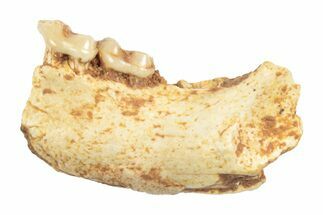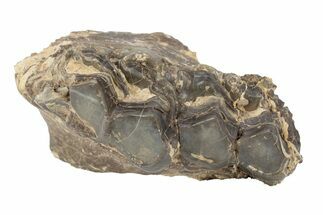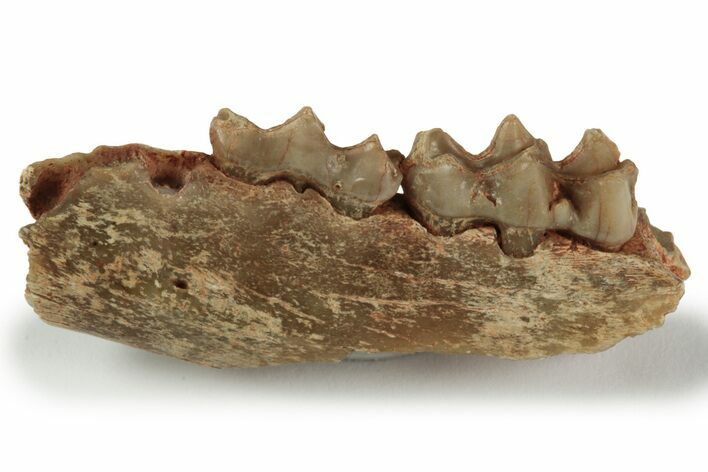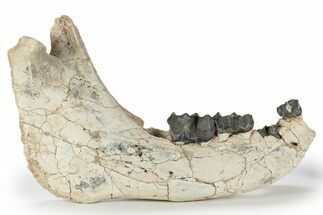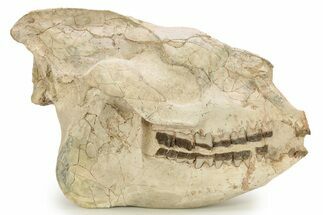This Specimen has been sold.
1.26" Fossil Early Ungulate (Xiphodon?) Jaw - Quercy, France
This is a 1.26" wide jaw section (mandible) from an Eocene ungulate (Xiphodon?). The tooth morphology appears representative of the genus, however abnormalities make identification unclear. The jaw contains 2 well-preserved teeth.
Xiphodon was a genus of primitive ungulate. It was a generalist herbivore, feeding on any plants it could find in its habitat. It was an artiodactyl or "even-toed" ungulate, related to modern camels, giraffes, and deer. It was small in size, about 1.5 feet, and was low-slung with a thick tail.
The Quercy Phosphorites Formation in France is world famous for its Eocene to Miocene faunas, especially those from the upper Eocene to lower Oligocene. The latter particularly helped to understand the ‘Grande Coupure’, a dramatic faunal turnover event that occurred in Europe during the Eocene-Oligocene transition. Fossils from the Quercy Phosphorites were excavated during the mid-19th century until the early 20th century from a series of sites that are no longer accessible. These fossils have subsequently dispersed between several research institutions, unfortunately losing some temporal and geographical information in the process. This material is part of an old collection we acquired that presumably was collected along with this material in the 19th or early 20th century. A recently published paper on the mammals of the Quercy Phosphorites can be found below.
The upper Eocene-Oligocene carnivorous mammals from the Quercy Phosphorites (France) housed in Belgian collections
The upper Eocene-Oligocene carnivorous mammals from the Quercy Phosphorites (France) housed in Belgian collections
SPECIES
Xiphodon sp.?
LOCATION
Lot (Formerly Quercy), France
FORMATION
Quercy Phosphorites Formation
SIZE
1.26" Wide
CATEGORY
ITEM
#218458
We guarantee the authenticity of all of our specimens.
 Reviews
Reviews

